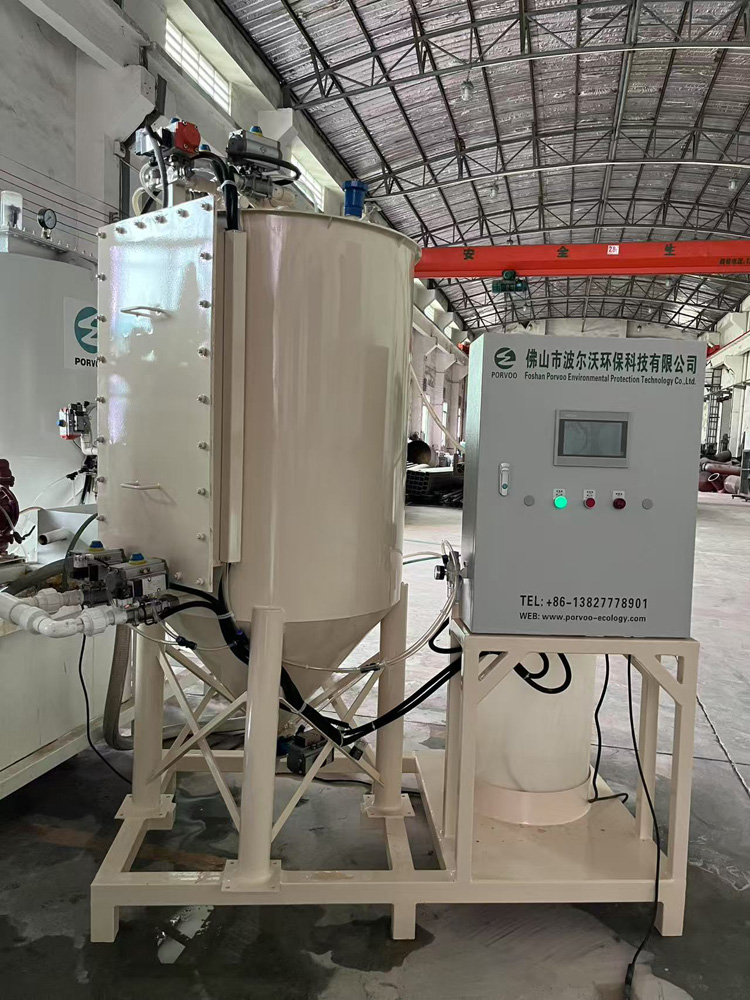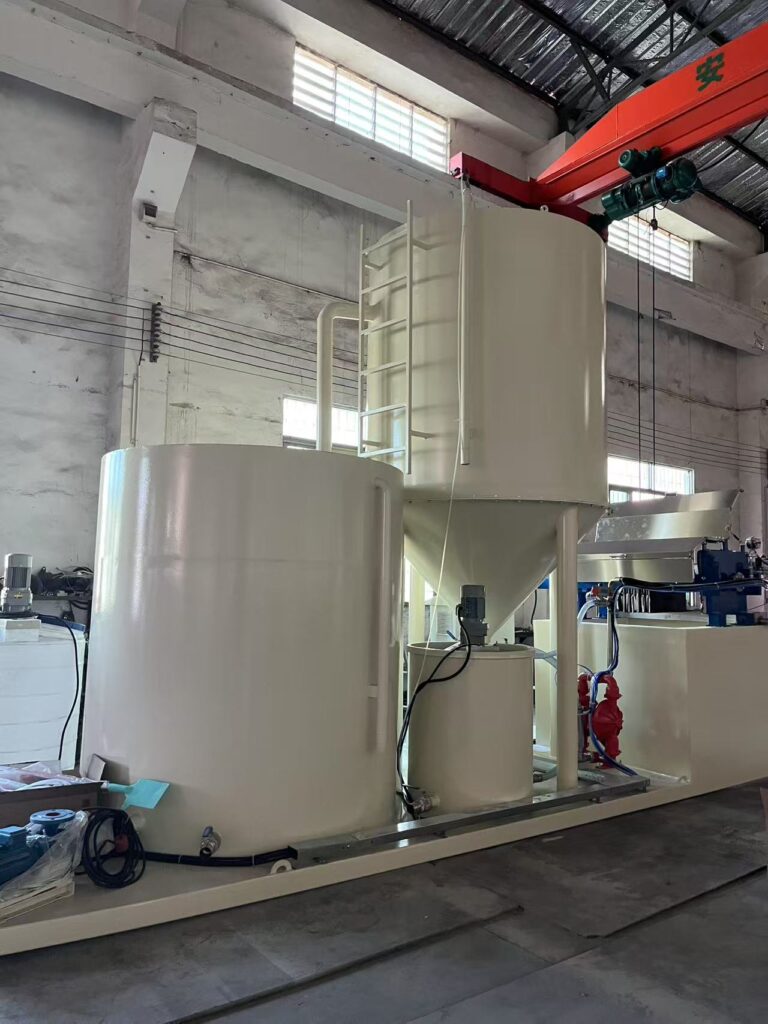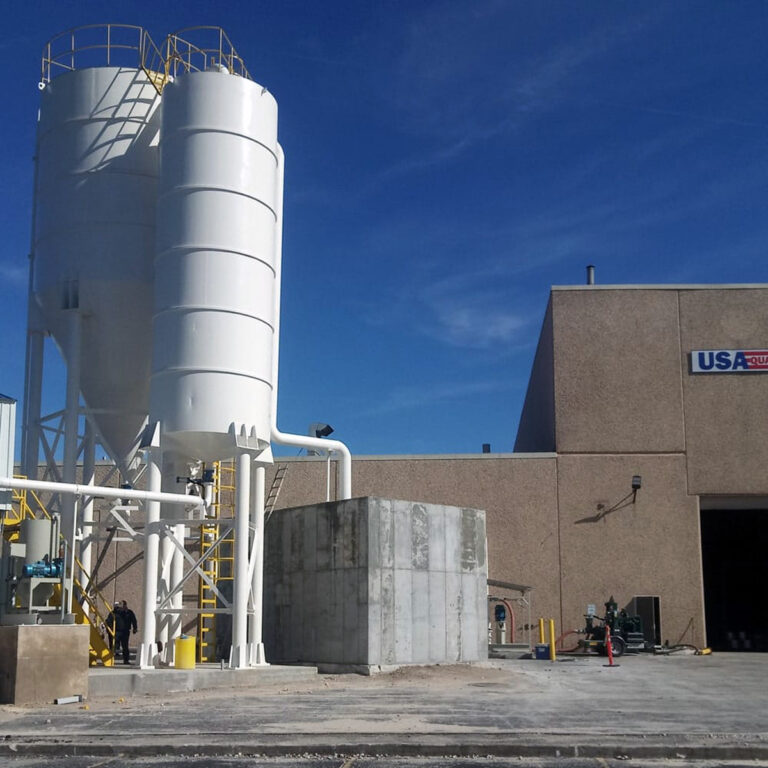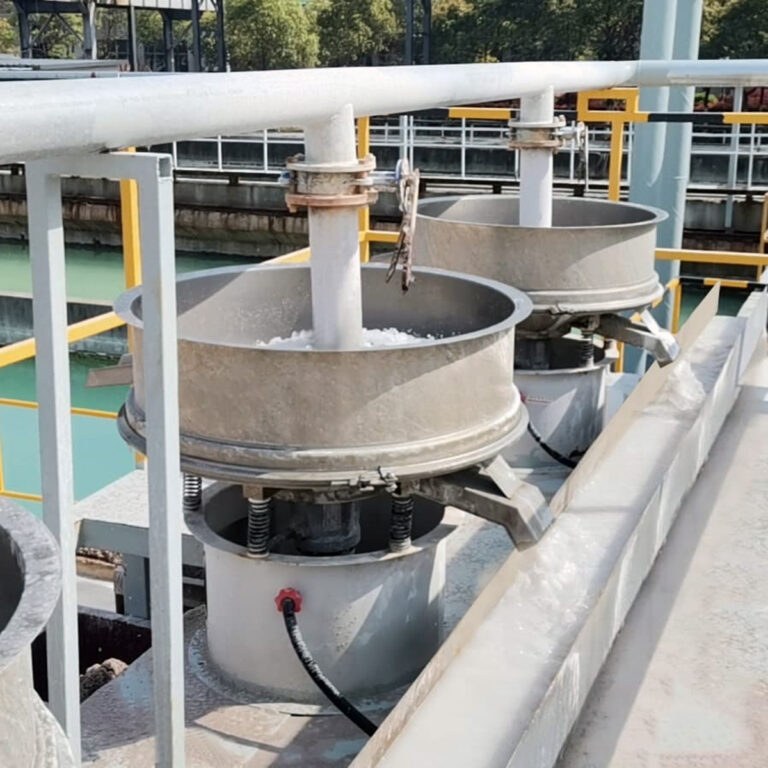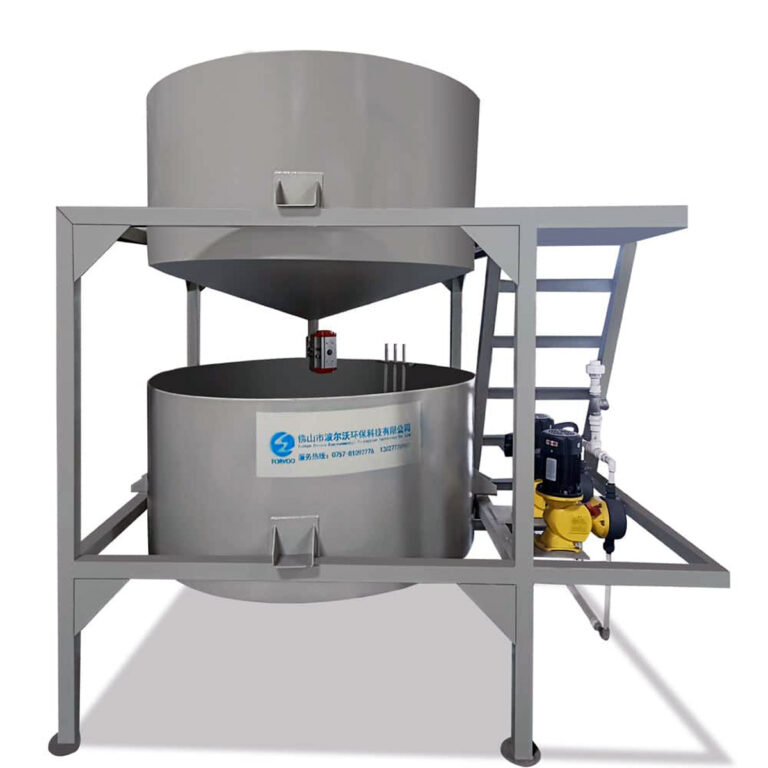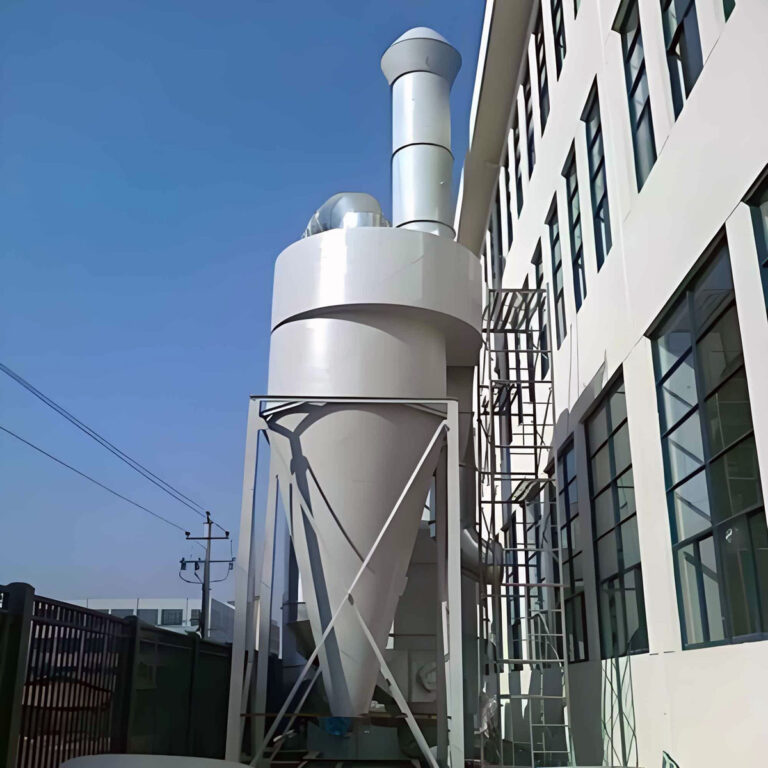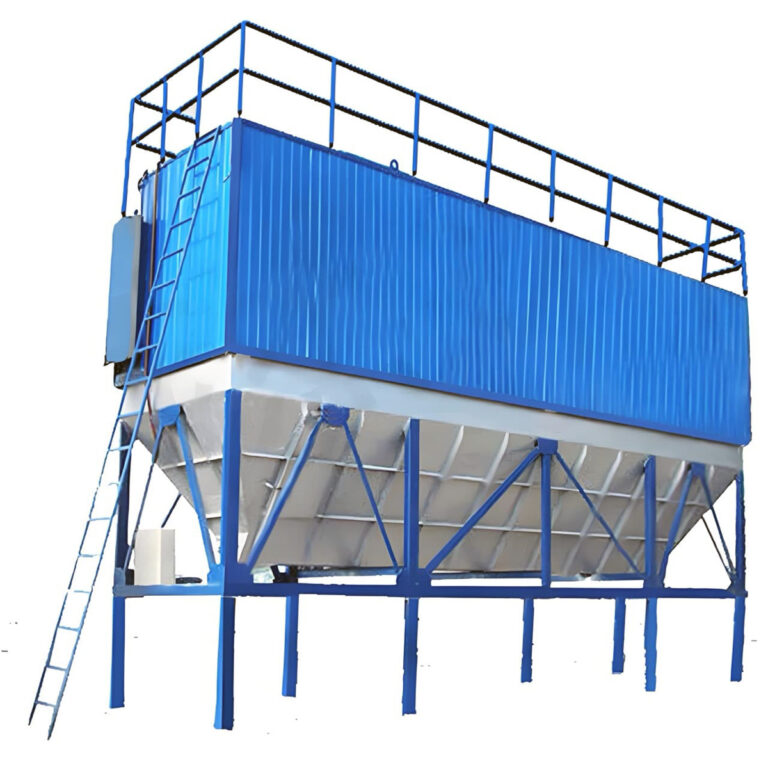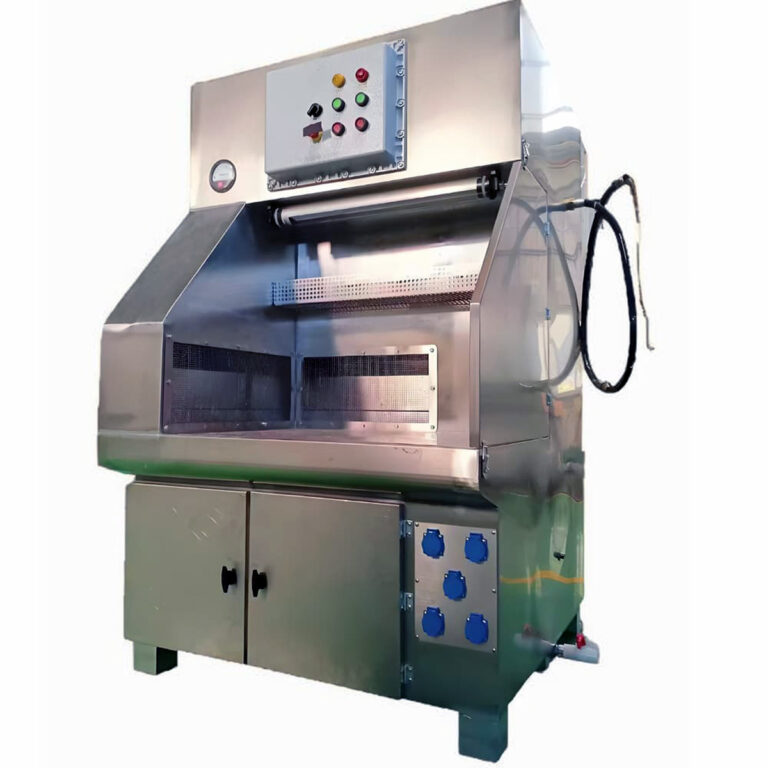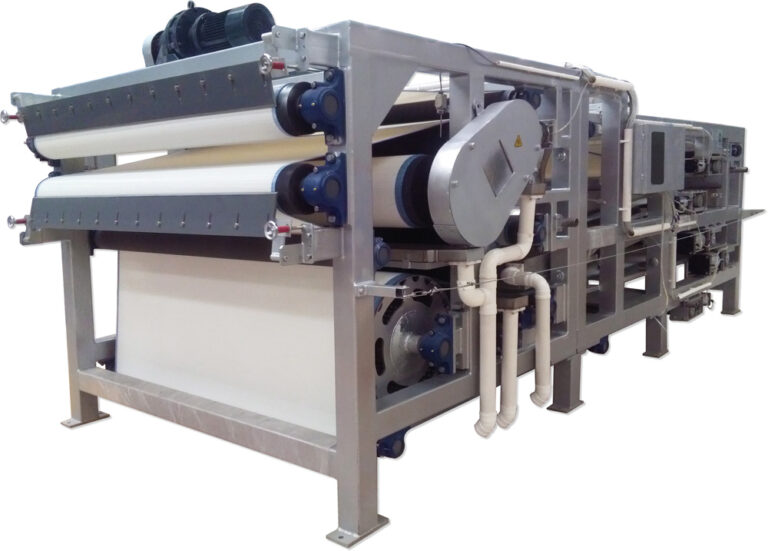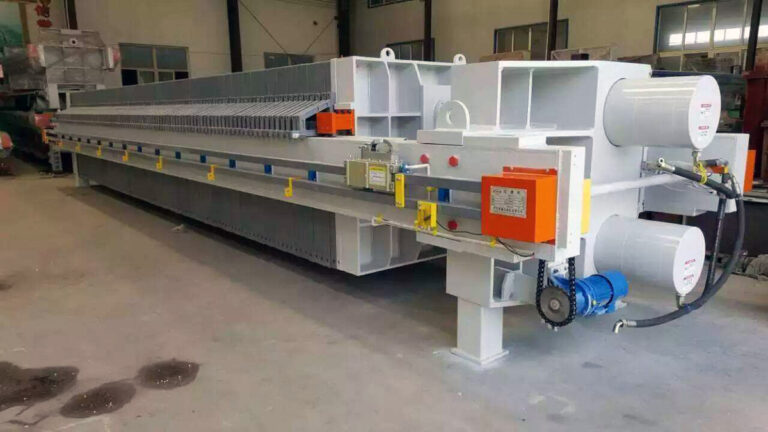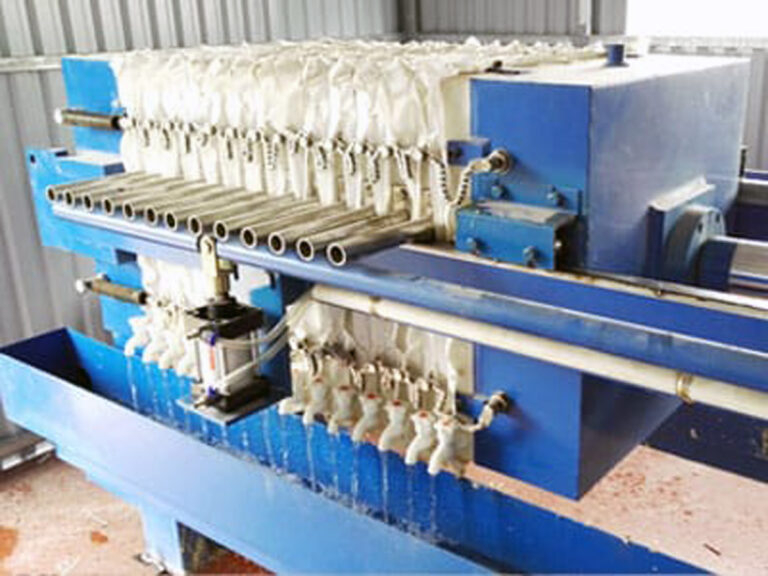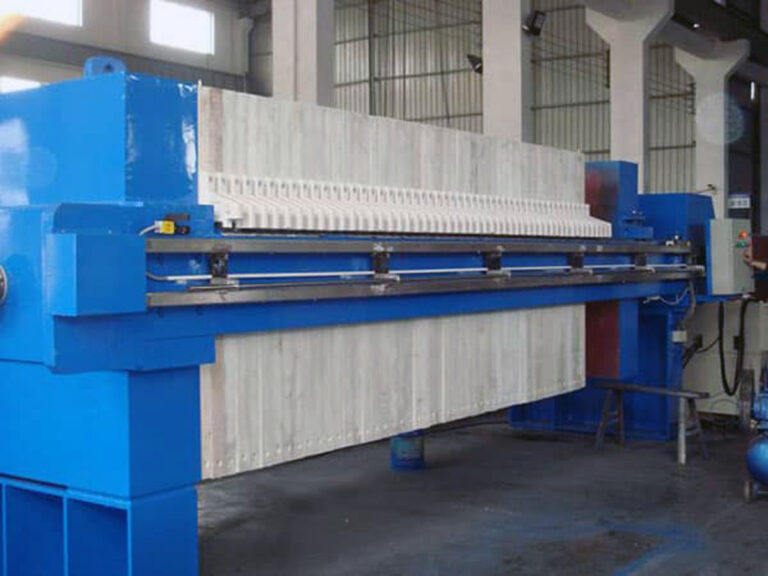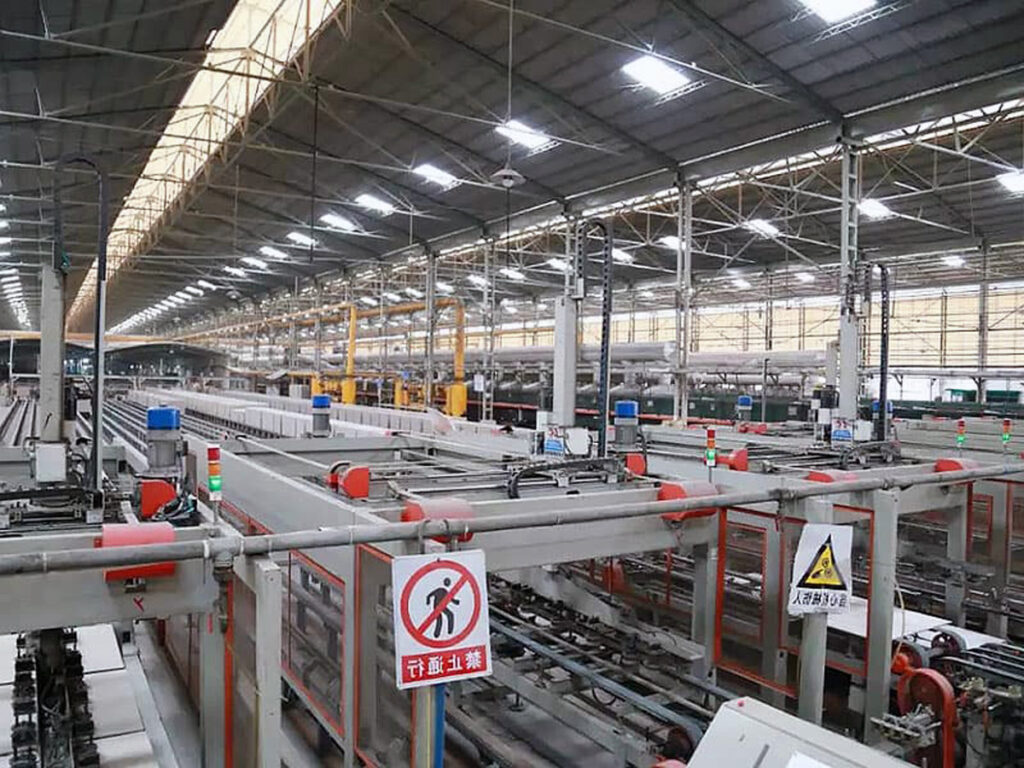The global filtration market faces a $2.3 billion challenge annually due to inefficient solid-liquid separation processes across industries. Traditional filtration methods often struggle with fine particle retention, require frequent maintenance, and fail to deliver consistent performance under demanding industrial conditions. These limitations translate into production bottlenecks, increased operational costs, and compromised product quality that can devastate manufacturing timelines and profitability.
Without effective filtration solutions, industries face cascading problems: mining operations lose valuable minerals through inadequate dewatering, chemical plants struggle with product purity, and water treatment facilities cannot meet increasingly stringent environmental regulations. The consequences extend beyond immediate operational issues, potentially resulting in regulatory violations, environmental contamination, and significant financial penalties.
Ceramic vacuum filters represent a transformative solution that addresses these critical challenges through advanced porous ceramic technology. This comprehensive guide explores the diverse applications of ceramic vacuum filtration systems across industries, examining their technical capabilities, performance advantages, and strategic implementation considerations. We’ll analyze real-world case studies, expert insights, and emerging trends that position ceramic filters as essential components in modern industrial operations.
What is a Ceramic Vacuum Filter and How Does It Work?
A ceramic vacuum filter utilizes porous ceramic media combined with vacuum pressure to achieve superior solid-liquid separation performance. The technology operates on the principle of differential pressure, where vacuum creates a driving force that pulls liquid through microscopic pores while retaining solid particles on the ceramic surface.
Core Operating Principles
The filtration process begins when slurry enters the filter chamber containing ceramic filter elements. These elements, typically made from aluminum oxide, silicon carbide, or zirconia, feature precisely controlled pore structures ranging from 0.1 to 100 microns. The vacuum system creates negative pressure on the filtrate side, drawing liquid through the ceramic matrix while forming a filter cake on the surface.
According to Dr. Sarah Mitchell, a filtration engineering specialist at the International Filtration Institute, “The unique microstructure of ceramic filters provides exceptional particle retention capabilities while maintaining high permeability rates, achieving filtration efficiencies exceeding 99.5% for particles larger than the pore size.” This combination of high efficiency and consistent performance makes ceramic vacuum filters particularly valuable in demanding industrial applications.
Technical Specifications and Performance Metrics
Modern ceramic vacuum filters operate across impressive performance ranges that demonstrate their industrial versatility:
| Parameter | Range | Significance |
|---|---|---|
| Pore Size | 0.1-100 microns | Determines particle retention |
| Operating Pressure | 0.1-0.8 MPa | Affects filtration rate |
| Temperature Range | -40°C to +800°C | Enables diverse applications |
| pH Tolerance | 0-14 | Chemical compatibility |
The ceramic material’s chemical inertness allows operation in aggressive environments where metallic filters would fail. Unlike conventional filter media, ceramic elements maintain structural integrity under extreme conditions, providing consistent performance across temperature fluctuations and chemical exposures that would compromise alternative filtration technologies.
Regeneration and Maintenance Characteristics
One distinctive advantage of ceramic vacuum filters lies in their regeneration capabilities. The ceramic surface can be cleaned through backwashing, compressed air pulsing, or chemical cleaning without degrading the filter medium. This regeneration process typically restores 95-98% of original permeability, significantly extending operational lifespan compared to disposable filter media.
What Are the Key Applications of Ceramic Vacuum Filters in Mining?
The mining industry represents one of the most demanding environments for filtration technology, where ceramic filter applications have revolutionized traditional processing methods. Mining operations require robust filtration solutions capable of handling abrasive slurries, high solid concentrations, and corrosive chemical environments while maintaining consistent performance under continuous operation.
Mineral Concentrate Dewatering
In mineral processing, ceramic vacuum filters excel at dewatering concentrate slurries to achieve optimal moisture content for downstream processing. Iron ore concentrate dewatering exemplifies this application, where ceramic filters achieve final moisture levels below 8% compared to 12-15% achieved by conventional belt filters. This improvement translates to reduced transportation costs and enhanced pelletizing efficiency.
A leading iron ore producer in Australia implemented ceramic filtration systems to replace aging drum filters, resulting in a 23% increase in concentrate throughput and 15% reduction in energy consumption. The ceramic elements demonstrated exceptional resistance to the abrasive magnetite particles while maintaining consistent filtration rates throughout extended operational cycles.
Tailings Management and Environmental Compliance
Environmental regulations increasingly demand effective tailings dewatering to minimize water consumption and reduce environmental impact. Ceramic vacuum filters provide superior performance in processing fine tailings, typically containing particles smaller than 10 microns that challenge conventional filtration methods.
The technology enables tailings moisture reduction from 25-30% to below 15%, significantly improving tailings stability and reducing long-term environmental risks. This dewatering efficiency proves particularly valuable in water-scarce regions where maximizing water recovery becomes economically and environmentally critical.
Precious Metal Recovery Applications
Gold and silver recovery operations benefit significantly from ceramic filter precision in processing leach solutions and pregnant liquor streams. The fine pore structure effectively captures precious metal particles while allowing rapid throughput of clarified solutions. According to industry data, ceramic filters achieve precious metal recovery rates of 99.7-99.9%, compared to 97-98% for conventional filtration methods.
How Do Ceramic Filters Revolutionize Chemical Processing?
Chemical manufacturing demands filtration solutions capable of handling aggressive chemicals, high temperatures, and precise separation requirements. Industrial ceramic filters have transformed chemical processing by providing unprecedented chemical resistance and thermal stability that enables operations previously impossible with conventional filtration technology.
Catalyst Recovery and Recycling
Catalytic processes generate valuable catalyst particles that require efficient recovery for economic viability. Ceramic vacuum filters excel in catalyst recovery applications, particularly in petrochemical refining where catalyst particles range from 0.5 to 5 microns. The chemical inertness of ceramic materials prevents catalyst contamination while achieving recovery rates exceeding 99.5%.
A major petrochemical facility reported catalyst recovery improvements of 18% after implementing ceramic vacuum filtration, resulting in annual savings of $2.3 million through reduced catalyst replacement costs. The ceramic elements’ resistance to hydrocarbon exposure and thermal cycling proved essential for maintaining consistent performance in this demanding application.
Pharmaceutical and Fine Chemical Production
Pharmaceutical manufacturing requires absolute purity and contamination-free processing, making ceramic filters ideal for active pharmaceutical ingredient (API) production. The non-porous surface of ceramic elements prevents bacterial growth while enabling sterilization through high-temperature treatment or chemical sanitization.
| Application | Benefits | Performance Metrics |
|---|---|---|
| API Crystallization | Precise particle control | 99.9% purity achievement |
| Solvent Recovery | Chemical compatibility | 95% solvent recovery rate |
| Sterile Filtration | Contamination prevention | 10⁻⁶ sterility assurance |
High-Temperature Chemical Processing
The exceptional thermal stability of ceramic materials enables filtration at temperatures up to 800°C, opening possibilities for hot filtration applications that reduce energy consumption and processing time. Hot filtration of polymer melts, molten salt processing, and high-temperature crystallization represent emerging applications where ceramic filters provide unique capabilities.
What Role Do Ceramic Vacuum Filters Play in Water Treatment?
Water treatment facilities increasingly rely on vacuum filtration systems to meet stringent discharge standards and drinking water quality requirements. Ceramic vacuum filters offer superior performance in removing suspended solids, pathogens, and chemical contaminants while providing long-term reliability essential for critical water treatment applications.
Municipal Water Treatment and Purification
Municipal water treatment plants utilize ceramic filters for secondary and tertiary treatment processes, effectively removing particles, bacteria, and viruses that pose health risks. The precise pore structure enables pathogen removal while maintaining high flow rates necessary for large-scale water treatment operations.
Recent installations at major metropolitan water treatment facilities demonstrate ceramic filters’ capability to achieve turbidity levels below 0.1 NTU while processing flow rates exceeding 50 million gallons per day. This performance level meets or exceeds regulatory requirements while providing operational flexibility for varying water quality conditions.
Industrial Wastewater Treatment
Industrial wastewater contains diverse contaminants requiring specialized treatment approaches. Ceramic vacuum filters excel at removing heavy metals, oils, and chemical pollutants while achieving discharge standards that protect environmental water quality. The chemical resistance of ceramic materials enables treatment of aggressive industrial effluents without filter degradation.
A chemical manufacturing complex implemented advanced ceramic filtration to treat process wastewater containing sulfuric acid and heavy metal contamination. The system achieved 99.2% heavy metal removal efficiency while maintaining stable operation despite the corrosive environment that had previously destroyed metallic filtration equipment.
Membrane Bioreactor Applications
Membrane bioreactors (MBRs) represent advanced wastewater treatment technology where ceramic filters serve as critical components for biomass separation. The biological compatibility of ceramic materials supports healthy microbial populations while providing reliable solid-liquid separation essential for MBR operation.
Ceramic elements in MBR applications typically operate for 3-5 years before replacement, significantly longer than polymeric membranes that require replacement every 1-2 years. This extended lifespan reduces maintenance costs and operational disruptions while maintaining consistent treatment performance.
How Are Ceramic Filters Transforming Food and Beverage Processing?
Food and beverage manufacturing requires filtration solutions that meet strict hygiene standards while preserving product quality and flavor characteristics. Ceramic vacuum filtration technology provides food-grade filtration capabilities that ensure product safety while maintaining operational efficiency critical for commercial food production.
Beverage Clarification and Stabilization
Beer, wine, and juice production rely heavily on filtration for clarity, stability, and shelf-life extension. Ceramic filters excel in removing yeast, bacteria, and suspended particles while preserving flavor compounds and nutritional content. The smooth, non-porous surface prevents microbial growth and enables effective cleaning and sanitization.
Craft breweries increasingly adopt ceramic filtration to achieve commercial clarity standards while maintaining flavor integrity that defines their products. A study by the International Brewing Institute found that ceramic-filtered beers retained 98% of flavor compounds compared to 92% for conventional filtration methods.
Dairy Processing Applications
Dairy processing demands filtration solutions capable of handling proteins, fats, and other complex organic compounds while maintaining strict hygiene standards. Ceramic filters provide excellent performance in milk clarification, whey protein concentration, and cheese production applications.
The thermal stability of ceramic materials enables hot filtration of dairy products, reducing energy consumption while improving process efficiency. Steam sterilization capabilities ensure pathogen elimination while maintaining product quality essential for dairy safety standards.
Edible Oil Processing and Purification
Edible oil processing requires removal of impurities, water, and solid particles while preserving nutritional value and flavor characteristics. Ceramic vacuum filters achieve superior clarification compared to conventional earth filtration while eliminating filter aid disposal issues and reducing processing costs.
Processing facilities report 15-20% reduction in oil losses when implementing ceramic filtration, primarily due to the elimination of filter aid that typically absorbs significant quantities of product. This efficiency improvement translates to substantial cost savings in high-volume oil processing operations.
What Are the Advantages and Limitations of Ceramic Vacuum Filtration?
Understanding the comprehensive benefits and potential limitations of ceramic vacuum filters enables informed decision-making for industrial applications. While ceramic filtration technology offers exceptional performance advantages, certain considerations must be evaluated to ensure optimal implementation success.
Performance Advantages and Operational Benefits
Ceramic vacuum filters deliver superior performance across multiple operational parameters that translate directly to improved productivity and reduced costs. The primary advantages include exceptional chemical resistance, thermal stability, and regeneration capabilities that provide long-term operational reliability.
Durability represents a significant advantage, with ceramic elements typically operating for 5-10 years in demanding industrial applications. This extended lifespan reduces replacement costs and minimizes production interruptions for maintenance activities. According to industry analysis, ceramic filters provide 3-5 times longer service life compared to conventional polymeric filtration media.
The regeneration capability of ceramic filters enables restoration of original performance through various cleaning methods. Backwashing, chemical cleaning, and thermal treatment can restore 95-98% of original permeability, significantly extending operational life and reducing operating costs.
Technical Limitations and Considerations
Despite exceptional performance capabilities, ceramic vacuum filters present certain limitations that require careful consideration during system design and implementation. The primary limitation involves higher initial capital costs compared to conventional filtration equipment, typically 30-50% higher than comparable metallic or polymeric systems.
While ceramic materials demonstrate excellent chemical resistance, they can be susceptible to thermal shock if subjected to rapid temperature changes. Proper system design must incorporate gradual temperature transitions to prevent ceramic element damage that could compromise filtration performance.
The brittleness of ceramic materials requires careful handling during installation and maintenance activities. Unlike metallic filters that may deform under stress, ceramic elements can fracture if subjected to excessive mechanical forces or improper installation procedures.
Economic Considerations and Return on Investment
The higher initial investment in ceramic filtration technology must be evaluated against long-term operational benefits and cost savings. Total cost of ownership analysis typically demonstrates favorable economics for ceramic filters due to extended service life, reduced maintenance requirements, and improved process efficiency.
| Cost Factor | Ceramic Filter | Conventional Filter | Difference |
|---|---|---|---|
| Initial Cost | $100,000 | $65,000 | +54% |
| Annual Operating Cost | $8,000 | $15,000 | -47% |
| Service Life | 8 years | 3 years | +167% |
| Total 10-Year Cost | $180,000 | $290,000 | -38% |
In our experience working with industrial clients, ceramic filtration systems typically achieve payback periods of 2-3 years through operational savings and improved productivity. The extended service life and reduced maintenance requirements often justify the higher initial investment for operations requiring reliable, long-term filtration performance.
How to Choose the Right Ceramic Vacuum Filter for Your Application?
Selecting the optimal ceramic vacuum filter requires comprehensive evaluation of process requirements, operating conditions, and performance expectations. The diversity of ceramic materials, pore sizes, and system configurations demands careful analysis to ensure optimal filtration performance and economic viability.
Process Analysis and Requirements Assessment
The selection process begins with thorough analysis of filtration requirements, including particle size distribution, solid concentration, chemical compatibility, and throughput demands. These parameters directly influence ceramic material selection, pore size specification, and system configuration decisions.
Temperature and pressure requirements significantly impact ceramic element selection, as different ceramic materials exhibit varying thermal and mechanical properties. Silicon carbide elements excel in high-temperature applications, while aluminum oxide provides superior chemical resistance for aggressive environments.
Flow rate requirements determine filter area sizing and vacuum system specifications. Proper sizing ensures adequate filtration capacity while avoiding excessive pressure drop that could compromise performance or increase energy consumption.
Material Selection and Customization Options
PORVOO offers comprehensive ceramic filtration solutions with multiple material options tailored to specific application requirements. Aluminum oxide, silicon carbide, and zirconia ceramics each provide distinct advantages for different operational environments.
Pore size customization enables precise particle retention while optimizing filtration rate for specific applications. Standard pore sizes range from 0.1 to 100 microns, with custom specifications available for specialized requirements.
Surface treatment options including hydrophilic or hydrophobic coatings can enhance performance for specific applications. These treatments modify surface properties to improve filtration efficiency, reduce fouling, or enhance cleaning effectiveness.
System Integration and Installation Considerations
Successful ceramic filter implementation requires careful integration with existing process systems and utilities. Vacuum system sizing must account for filter area, operating pressure, and anticipated pressure drop to ensure adequate driving force for optimal performance.
Control system integration enables automated operation and monitoring essential for maintaining consistent filtration performance. Modern industrial filtration systems incorporate advanced control capabilities that optimize performance while minimizing operator intervention.
Installation planning must consider ceramic element fragility and proper handling procedures to prevent damage during system commissioning. Proper installation techniques ensure optimal performance while maximizing component service life.
Conclusion
Ceramic vacuum filters represent a transformative technology that addresses critical filtration challenges across diverse industrial applications. From mining operations requiring robust dewatering capabilities to pharmaceutical manufacturing demanding absolute purity, ceramic filtration systems deliver exceptional performance that enhances productivity while reducing operational costs.
The key advantages of ceramic vacuum filtration technology include superior chemical resistance, thermal stability, and regeneration capabilities that provide long-term reliability in demanding industrial environments. While initial capital costs may exceed conventional filtration systems, the extended service life and reduced maintenance requirements typically justify the investment through improved total cost of ownership.
Future developments in ceramic filtration technology promise even greater capabilities, including advanced surface treatments, custom pore structures, and intelligent monitoring systems that will further enhance performance and operational efficiency. Industries seeking sustainable, high-performance filtration solutions should evaluate ceramic vacuum filters as strategic investments in operational excellence.
For applications requiring reliable, long-term filtration performance, ceramic vacuum filters offer proven technology that delivers consistent results across diverse industrial environments. The decision to implement ceramic filtration should be based on comprehensive analysis of process requirements, economic considerations, and long-term operational objectives.
To explore how ceramic vacuum filtration can enhance your specific application, consider consulting with filtration specialists who can provide detailed analysis and customized solutions. What unique challenges does your operation face that ceramic filtration technology might address? The evolving landscape of industrial filtration continues to reveal new opportunities for ceramic technology implementation across emerging applications and industries.
Frequently Asked Questions
Q: What are ceramic vacuum filters and why are they important in industrial applications?
A: Ceramic vacuum filters are specialized filtration devices that use porous ceramic materials to separate solids from liquids under vacuum conditions. Their importance in industrial applications comes from their excellent chemical resistance, high temperature tolerance, and durability. These features allow them to effectively handle harsh chemical slurries and high-solid-content waste, making them ideal for industries such as mining, chemical processing, wastewater treatment, and metal casting.
Q: What are the common industrial applications of ceramic vacuum filters?
A: Ceramic vacuum filters are widely used in several key industrial sectors, including:
- Mining: Dewatering mineral concentrates and treating mine tailings to reduce waste volume.
- Chemical processing: Separating solids from specialty chemicals with high purity requirements.
- Aluminum casting: Filtering molten aluminum to remove impurities and enhance product quality.
- Wastewater treatment: Removing suspended solids from industrial effluent before discharge.
These applications benefit from the filters’ ability to produce dry cakes and clear filtrates efficiently.
Q: How do ceramic vacuum filters improve efficiency and product quality in industries like mining and chemical processing?
A: Ceramic vacuum filters enhance efficiency by:
- Handling high-solid-content slurries effectively, producing a drier filter cake that reduces disposal costs.
- Offering high filtration precision, which improves product purity and yield (up to 10% increase in chemical manufacturing).
- Operating at high temperatures and resisting corrosion, which extends filter life and lowers maintenance needs.
- Reducing energy consumption by up to 80% compared to traditional filters, thanks to their optimized design.
These factors collectively improve throughput, reduce waste, and enhance product consistency.
Q: What technological advancements are expected for ceramic vacuum filters by 2025?
A: Advances by 2025 include:
- Development of new ceramic materials with greater chemical and thermal resistance for more extreme industrial applications.
- Integration of smart coatings that provide self-cleaning functionality, reducing downtime.
- IoT-enabled filters that offer real-time performance monitoring and predictive maintenance, leading to higher operational efficiency.
- Increased filtration efficiency by roughly 30%, enhancing separation quality and energy savings.
Q: What makes ceramic vacuum filters suitable for high-temperature and corrosive industrial environments?
A: Ceramic materials used in vacuum filters are inherently resistant to chemical attack and can withstand very high temperatures without degrading. This durability means they maintain filtration performance even when exposed to aggressive chemicals or molten metals, such as in aluminum casting or specialty chemical production. Their robust structure ensures long service life and reliable operation under demanding industrial conditions.
Q: Can ceramic vacuum filters contribute to environmental sustainability in industrial processes?
A: Yes, ceramic vacuum filters promote sustainability by:
- Producing clearer filtrates that can be reused, reducing freshwater consumption.
- Generating drier solid waste, which lowers transportation and disposal impacts.
- Minimizing chemical waste through more efficient solid-liquid separation.
- Saving energy compared to conventional filtration methods, thus reducing overall carbon footprint.
These benefits align with the growing industrial emphasis on cleaner production and waste reduction.
External Resources
Vacuum ceramic filter – Wikipedia – Provides an overview of vacuum ceramic filters, detailing their construction, operation, and a comprehensive list of industrial applications such as mineral beneficiation, water treatment, metallurgy, and paper making.
Vacuum Ceramic Disk Filter – PORVOO Clean-Tech – Explains the core industrial use cases for vacuum ceramic disk filters, including wastewater treatment, mining, chemical manufacturing, and pharmaceuticals, and highlights their efficiency and key operational benefits.
Exploring the Wonders of Vacuum Ceramic Filters in Industry – Discusses the main applications of vacuum ceramic filters in industries such as mining (dewatering concentrates and tailings) and aluminum casting, emphasizing improved efficiency and product quality.
Ceramic Vacuum Disc Filter for Coal Mining – Focuses on the application of ceramic vacuum disc filters in coal mining, non-ferrous metal dewatering, and additional sectors like chemicals, pesticides, and pharmaceuticals.
Innovative Technologies for Dewatering Sludge: Ceramic Disc Filters – Reviews the use of ceramic vacuum filters in municipal and industrial sludge dewatering, outlining benefits such as energy efficiency and reduced disposal volumes.
Ceramic Vacuum Filter – Product Applications – Summarizes typical industrial applications for ceramic vacuum filters, including mineral processing, metallurgy, environmental management, and specialty chemical separation.
